This article was co-authored by Alan O. Khadavi, MD, FACAAI and by wikiHow staff writer, Glenn Carreau. Dr. Alan O. Khadavi is a Board Certified Allergist and a Pediatric Allergy Specialist based in Los Angeles, California. He holds a BS in biochemistry from the State University of New York (SUNY) at Stony Brook and an MD from the State University of New York Health Science Center at Brooklyn. Dr. Khadavi completed his pediatric residency at Schneider Children’s Hospital in New York, and then went on to complete his allergy and immunology fellowship and pediatric residency at Long Island College Hospital. He is board certified in adult and pediatric allergy/immunology. Dr. Khadavi is a Diplomate of the American Board of Allergy and Immunology, a Fellow of the American College of Allergy, Asthma & Immunology (ACAAI), and a member of the American Academy of Allergy, Asthma & Immunology (AAAAI). Dr. Khadavi's honors include Castle Connolly’s list of Top Doctors 2013-2020, and Patient Choice Awards "Most Compassionate Doctor" in 2013 & 2014.
There are 8 references cited in this article, which can be found at the bottom of the page.
This article has been viewed 5,821,751 times.
Looking for ways to stop a runny nose? You're in the right place. Runny noses are extremely common and can be caused by cold weather, allergies, and illnesses like the cold, flu, and sinus infections. Fortunately, there are plenty of things you can do to feel better. Read on for a comprehensive list of quick, easy solutions you can use to get rid of a runny nose right at home.
Things You Should Know
- Drink water and herbal tea, and consume spicy food. Use steam (from the shower, facial steam, or a cool-mist humidifier) to clear your sinuses.
- Rinse the mucus from your nose with saline nasal spray or a neti pot. Try over-the-counter decongestants or allergy medicine as well.
- Blow each nostril separately to clear away mucus. Get lots of rest and steer clear of allergens to reduce your nose’s runniness.
Steps
Expert Q&A
Did you know you can get premium answers for this article?
Unlock premium answers by supporting wikiHow
-
QuestionWhat's the best medicine to dry up a runny nose caused by allergies?
 Alan O. Khadavi, MD, FACAAIDr. Alan O. Khadavi is a Board Certified Allergist and a Pediatric Allergy Specialist based in Los Angeles, California. He holds a BS in biochemistry from the State University of New York (SUNY) at Stony Brook and an MD from the State University of New York Health Science Center at Brooklyn. Dr. Khadavi completed his pediatric residency at Schneider Children’s Hospital in New York, and then went on to complete his allergy and immunology fellowship and pediatric residency at Long Island College Hospital. He is board certified in adult and pediatric allergy/immunology. Dr. Khadavi is a Diplomate of the American Board of Allergy and Immunology, a Fellow of the American College of Allergy, Asthma & Immunology (ACAAI), and a member of the American Academy of Allergy, Asthma & Immunology (AAAAI). Dr. Khadavi's honors include Castle Connolly’s list of Top Doctors 2013-2020, and Patient Choice Awards "Most Compassionate Doctor" in 2013 & 2014.
Alan O. Khadavi, MD, FACAAIDr. Alan O. Khadavi is a Board Certified Allergist and a Pediatric Allergy Specialist based in Los Angeles, California. He holds a BS in biochemistry from the State University of New York (SUNY) at Stony Brook and an MD from the State University of New York Health Science Center at Brooklyn. Dr. Khadavi completed his pediatric residency at Schneider Children’s Hospital in New York, and then went on to complete his allergy and immunology fellowship and pediatric residency at Long Island College Hospital. He is board certified in adult and pediatric allergy/immunology. Dr. Khadavi is a Diplomate of the American Board of Allergy and Immunology, a Fellow of the American College of Allergy, Asthma & Immunology (ACAAI), and a member of the American Academy of Allergy, Asthma & Immunology (AAAAI). Dr. Khadavi's honors include Castle Connolly’s list of Top Doctors 2013-2020, and Patient Choice Awards "Most Compassionate Doctor" in 2013 & 2014.
Board Certified Allergist
-
QuestionWhat can I use to soothe my nose when it's raw from blowing it so much?
 Alan O. Khadavi, MD, FACAAIDr. Alan O. Khadavi is a Board Certified Allergist and a Pediatric Allergy Specialist based in Los Angeles, California. He holds a BS in biochemistry from the State University of New York (SUNY) at Stony Brook and an MD from the State University of New York Health Science Center at Brooklyn. Dr. Khadavi completed his pediatric residency at Schneider Children’s Hospital in New York, and then went on to complete his allergy and immunology fellowship and pediatric residency at Long Island College Hospital. He is board certified in adult and pediatric allergy/immunology. Dr. Khadavi is a Diplomate of the American Board of Allergy and Immunology, a Fellow of the American College of Allergy, Asthma & Immunology (ACAAI), and a member of the American Academy of Allergy, Asthma & Immunology (AAAAI). Dr. Khadavi's honors include Castle Connolly’s list of Top Doctors 2013-2020, and Patient Choice Awards "Most Compassionate Doctor" in 2013 & 2014.
Alan O. Khadavi, MD, FACAAIDr. Alan O. Khadavi is a Board Certified Allergist and a Pediatric Allergy Specialist based in Los Angeles, California. He holds a BS in biochemistry from the State University of New York (SUNY) at Stony Brook and an MD from the State University of New York Health Science Center at Brooklyn. Dr. Khadavi completed his pediatric residency at Schneider Children’s Hospital in New York, and then went on to complete his allergy and immunology fellowship and pediatric residency at Long Island College Hospital. He is board certified in adult and pediatric allergy/immunology. Dr. Khadavi is a Diplomate of the American Board of Allergy and Immunology, a Fellow of the American College of Allergy, Asthma & Immunology (ACAAI), and a member of the American Academy of Allergy, Asthma & Immunology (AAAAI). Dr. Khadavi's honors include Castle Connolly’s list of Top Doctors 2013-2020, and Patient Choice Awards "Most Compassionate Doctor" in 2013 & 2014.
Board Certified Allergist
Warnings
- Since a runny nose can also be a symptom of coronavirus (COVID-19), evaluate any other symptoms you might have to identify and diagnose coronavirus.⧼thumbs_response⧽
References
- ↑ https://www.mayoclinic.org/healthy-lifestyle/nutrition-and-healthy-eating/in-depth/water/art-20044256
- ↑ https://www.cdc.gov/antibiotic-use/colds.html
- ↑ https://www.mayoclinic.org/diseases-conditions/nonallergic-rhinitis/diagnosis-treatment/drc-20351235
- ↑ https://www.cdc.gov/antibiotic-use/colds.html
- ↑ https://blog.providence.org/blog-2/congested-essential-oils-to-the-rescue
- ↑ https://medlineplus.gov/ency/article/003049.htm
- ↑ https://medlineplus.gov/ency/article/003049.htm
- ↑ https://medlineplus.gov/ency/article/003049.htm
- ↑ https://medlineplus.gov/ency/article/003049.htm
- ↑ https://www.mountsinai.org/health-library/symptoms/stuffy-or-runny-nose-children
- ↑ https://www.mayoclinic.org/diseases-conditions/nonallergic-rhinitis/diagnosis-treatment/drc-20351235
- ↑ https://www.mayoclinic.org/diseases-conditions/allergies/symptoms-causes/syc-20351497
- ↑ https://www.cdc.gov/antibiotic-use/colds.html
- ↑ https://www.mayoclinic.org/symptoms/runny-nose/basics/when-to-see-doctor/sym-20050640
About This Article
If you have a runny nose, sit in your bathroom and let the shower run until the steam starts to relieve your nasal pressure. If your nose is still running, use a nasal wash or saline spray, which can help remove the mucus that’s making your nose run. An over-the-counter decongestant can also help dry out your nasal passages, although an antihistamine is a better option if you think your runny nose is due to allergies. Keep reading to learn about some of the underlying causes of a runny nose, including a sinus infection or the flu!



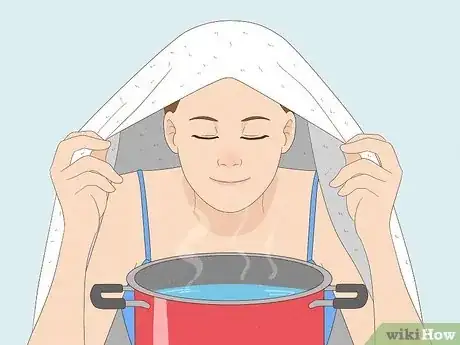


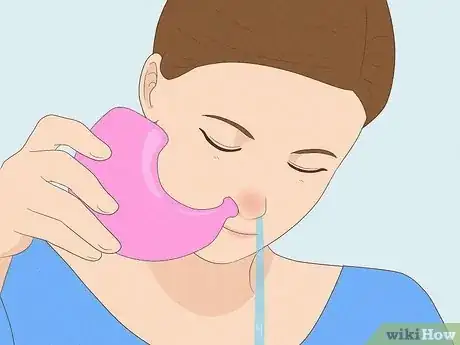
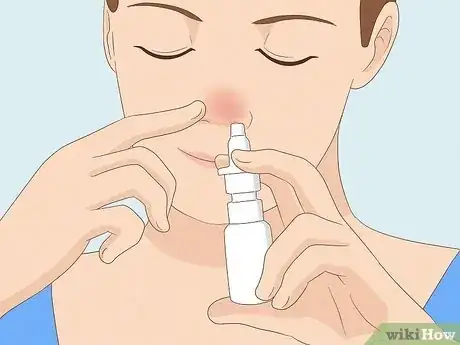
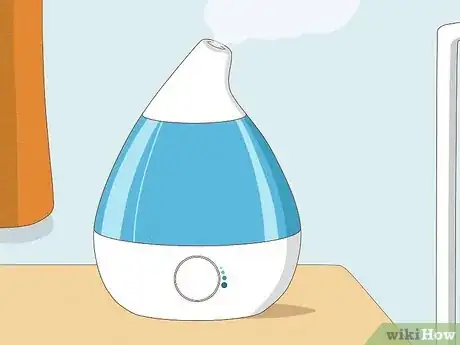
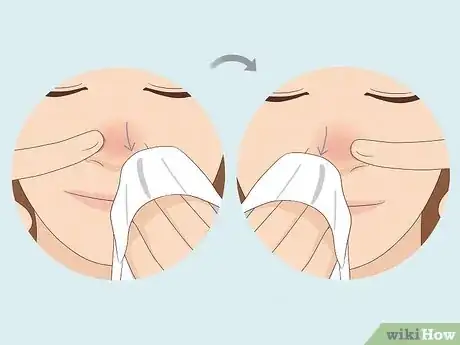
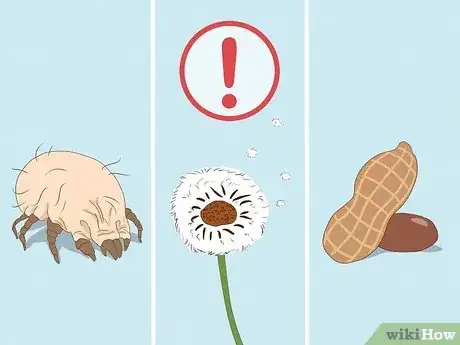



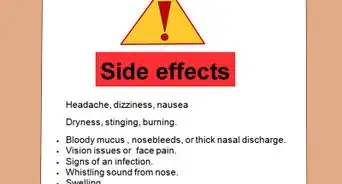



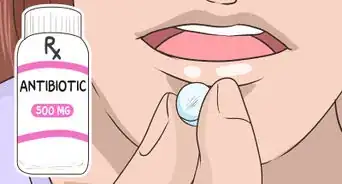



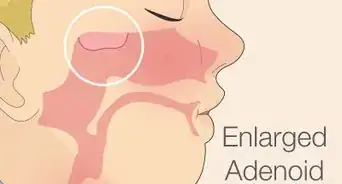














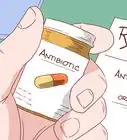


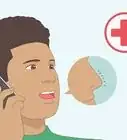



































Medical Disclaimer
The content of this article is not intended to be a substitute for professional medical advice, examination, diagnosis, or treatment. You should always contact your doctor or other qualified healthcare professional before starting, changing, or stopping any kind of health treatment.
Read More...